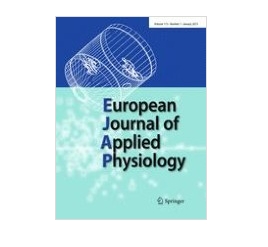Rampinini E1, Martin Marco1 2 , Ferioli D3, Bosio A1, Azzolini M2, Riggio M4, Maffiuletti N5
1 Human Performance Laboratory, MAPEI Sport Research Centre, Olgiate Olona, Varese, Italy;
2 Institute for Applied Human Physiology, School of Human and Behavioural Sciences, College of Human Sciences, Bangor University, Bangor, Wales, UK
3 UCAM Research Center for High Performance Sport, Catholic University of Murcia, Murcia, Spain
4 US Sassuolo Calcio, Sassuolo, MO, Italy
5 Human Performance Lab, Schulthess Clinic, Zurich, Switzerland.

Abstract
Purposes: To evaluate peripheral muscle function of the knee extensors during repeated changes of direction in professional soccer players by examining differences between competitive levels, periods of the season and playing positions, and to investigate the relationships between peripheral muscle function and physical activities during matches.
Methods: Knee extensor peripheral muscle function (twitch peak torque, PT) of 593 male soccer players from 13 European professional clubs competing at 3 different levels was evaluated 4 times during the season. The main outcomes were PTmax (maximal PT, muscle contractility), MPmax (maximal metabolic power exercise intensity) and PTdec (PT decline, muscle fatigability) obtained during intermittent runs of increasing intensity with multiple changes of direction interspersed with electrically evoked contractions. Relative total and sprint distances covered during a whole match and during short intervals were quantified from a sub-sample.
Results: PTmax and MPmax were higher for first than for second division (p < 0.047; d = 0.15-0.23) and Under-19 players (p < 0.007; d = 0.17-0.25). MPmax was lower (p < 0.016; d = 0.23-0.32) and PTdec was higher (p < 0.004; d = 0.26-0.39) in the pre-season compared to all the other time points. MPmax was higher for fullbacks than attackers and defenders (p < 0.041; d = 0.20-0.22). PTdec was higher for defenders than fullbacks, midfielders and wings (p < 0.029; d = 0.21-0.28). PTmax was associated with whole-match relative total distance (p = 0.004; d = 0.26). PTdec was associated with whole-match relative total distance and relative short-interval sprint distance (p < 0.050; d = 0.18-0.22).
Conclusion: The ability to sustain repeated change of direction efforts at high intensities while preserving peripheral muscle function should be considered an important determinant of soccer physical performance.
Eur J Appl Physiol. 2022 Jun 29. Online ahead of print.
PMID: 35768697 DOI: 10.1007/s00421-022-04988-2